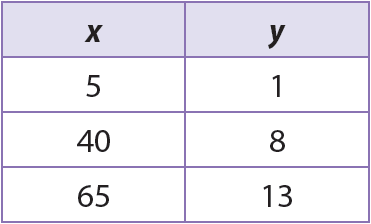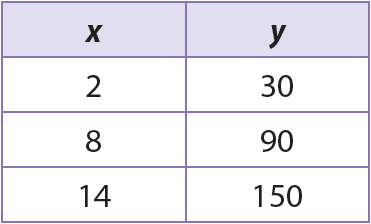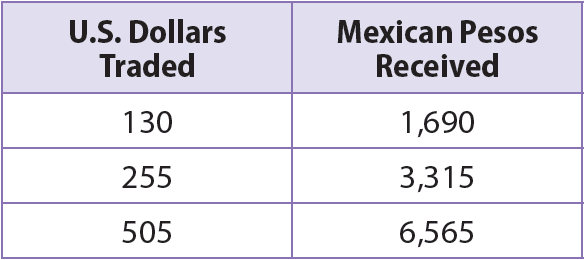PROPORTIONAL AND NONPROPORTIONAL SITUATIONS USING A TABLE
Subscribe to our ▶️ YouTube channel 🔴 for the latest videos, updates, and tips.
If there is not a constant rate of change in the data displayed in a table, then the table represents a nonlinear non-proportional relationship.
A linear relationship represented by a table is a proportional relationship when the quotient of each pair of numbers is constant. Otherwise, the linear relationship is non-proportional.
Example 1 :
Determine if the linear relationship represented by the table given below is a proportional or non-proportional relationship.

Solution :
From the table, find the ratio between each value of y and its corresponding value of x.
y/x = 1/5 = 1/5
y/x = 8/40 = 1/5
y/x = 13/65 = 1/5
So, the ratio between the values of y and and their corresponding values of x is constant. Hence, the relationship represented by the table given above is proportional.
Example 2 :
Determine if the linear relationship represented by the table given below is a proportional or non-proportional relationship.

Solution :
From the table, find the ratio between each value of y and its corresponding value of x.
y/x = 30/2 = 15
y/x = 90/8 = 11.25
y/x = 150/14 = 10.71
So, the ratio between the values of y and and their corresponding values of x is not constant. Hence, the relationship represented by the table given above is non-proportional.
Example 3 :
The values in the table represent the numbers of U.S. dollars three tourists traded for Mexican pesos. The relationship is linear. Is the relationship proportional or non-proportional?

Solution :
From the table, find the ratio between each value of "Mexican pesos received" and its corresponding value of "U.S. dollars traded".
Let "M" stand for Mexican pesos received and "U" stand for U.S. dollars traded.
U/M = 1,690/130 = 13
U/M = 3,315/255 = 13
U/M = 6,565/505 = 13
So, the ratio of pesos received to dollars traded is constant at 13 Mexican pesos per U.S. dollar. This is a proportional relationship.
Subscribe to our ▶️ YouTube channel 🔴 for the latest videos, updates, and tips.
Kindly mail your feedback to v4formath@gmail.com
We always appreciate your feedback.
About Us | Contact Us | Privacy Policy
©All rights reserved. onlinemath4all.com

Recent Articles
-
10 Hard SAT Math Questions (Part - 43)
Jan 04, 26 01:38 AM
10 Hard SAT Math Questions (Part - 43) -
90 Degree Clockwise Rotation
Jan 01, 26 06:58 AM
90 Degree Clockwise Rotation - Rule - Examples with step by step explanation -
US Common Core K-12 Curriculum Algebra Solving Systems of Equations
Jan 01, 26 04:51 AM
US Common Core K-12 Curriculum - Algebra : Solving Systems of Linear Equations
